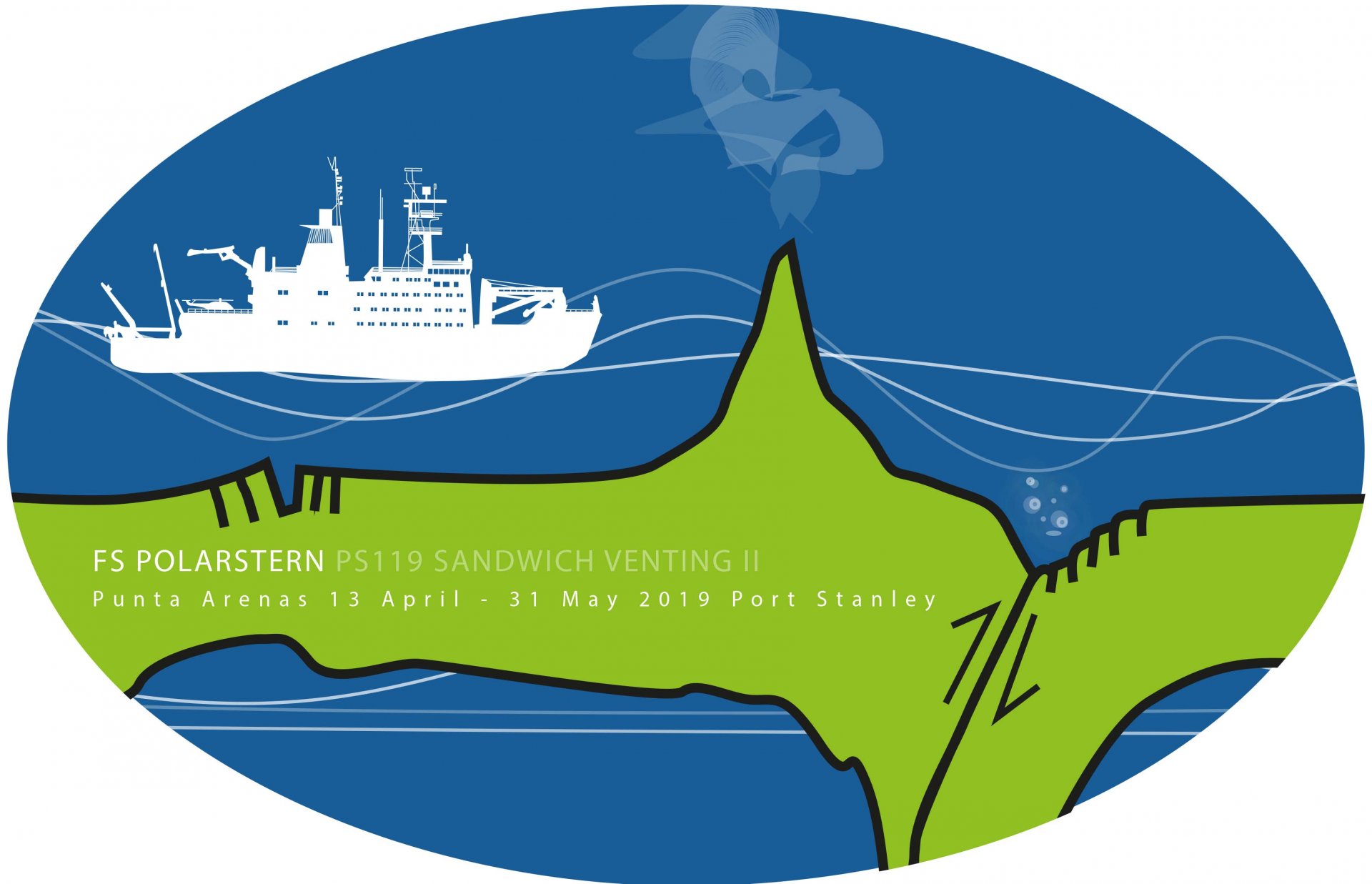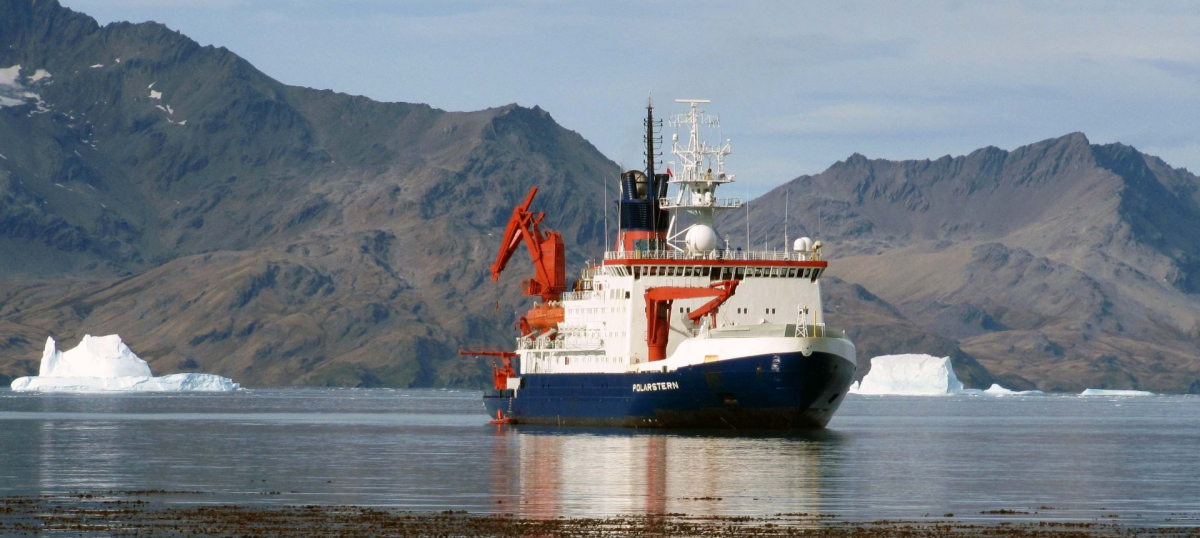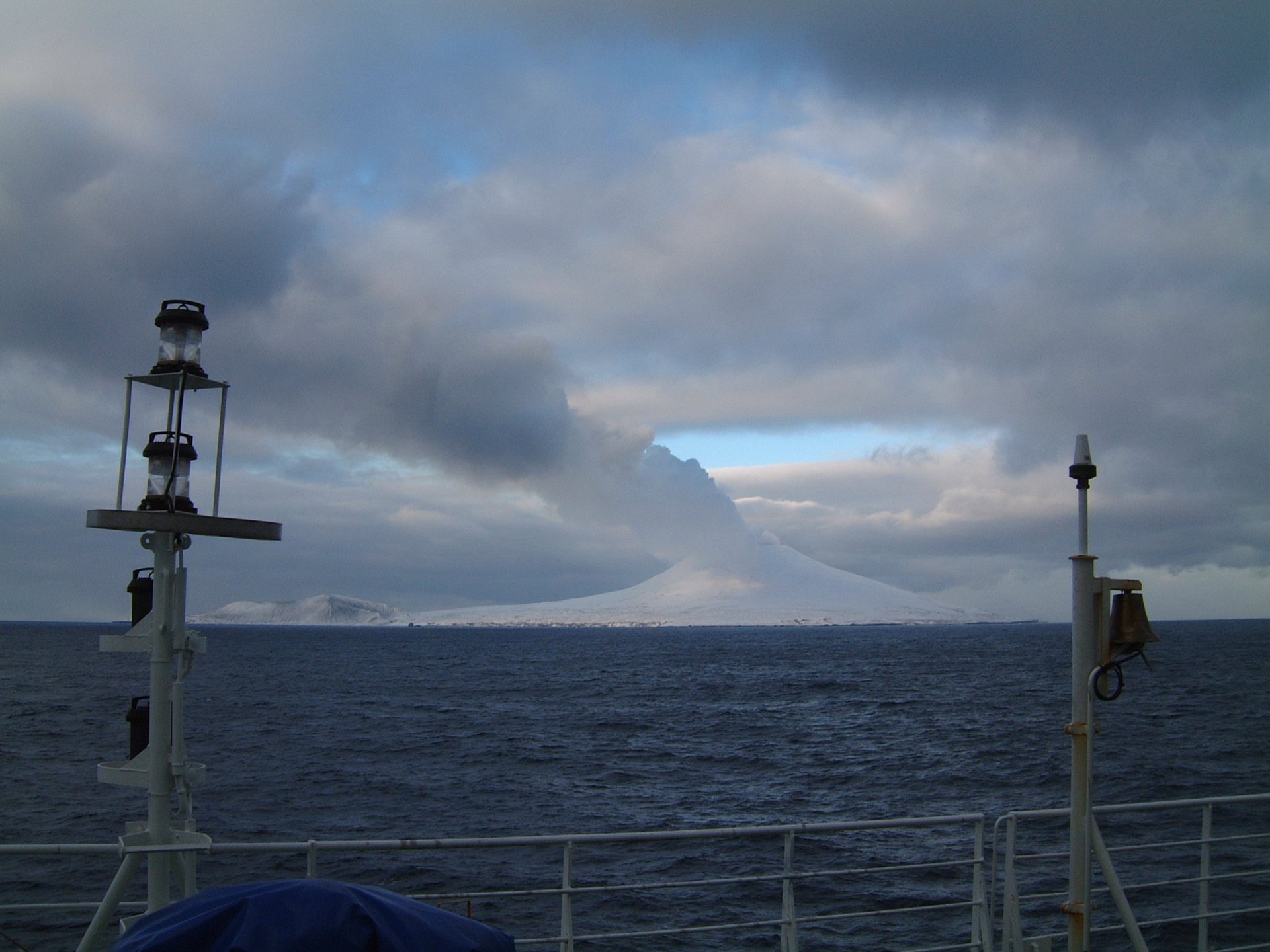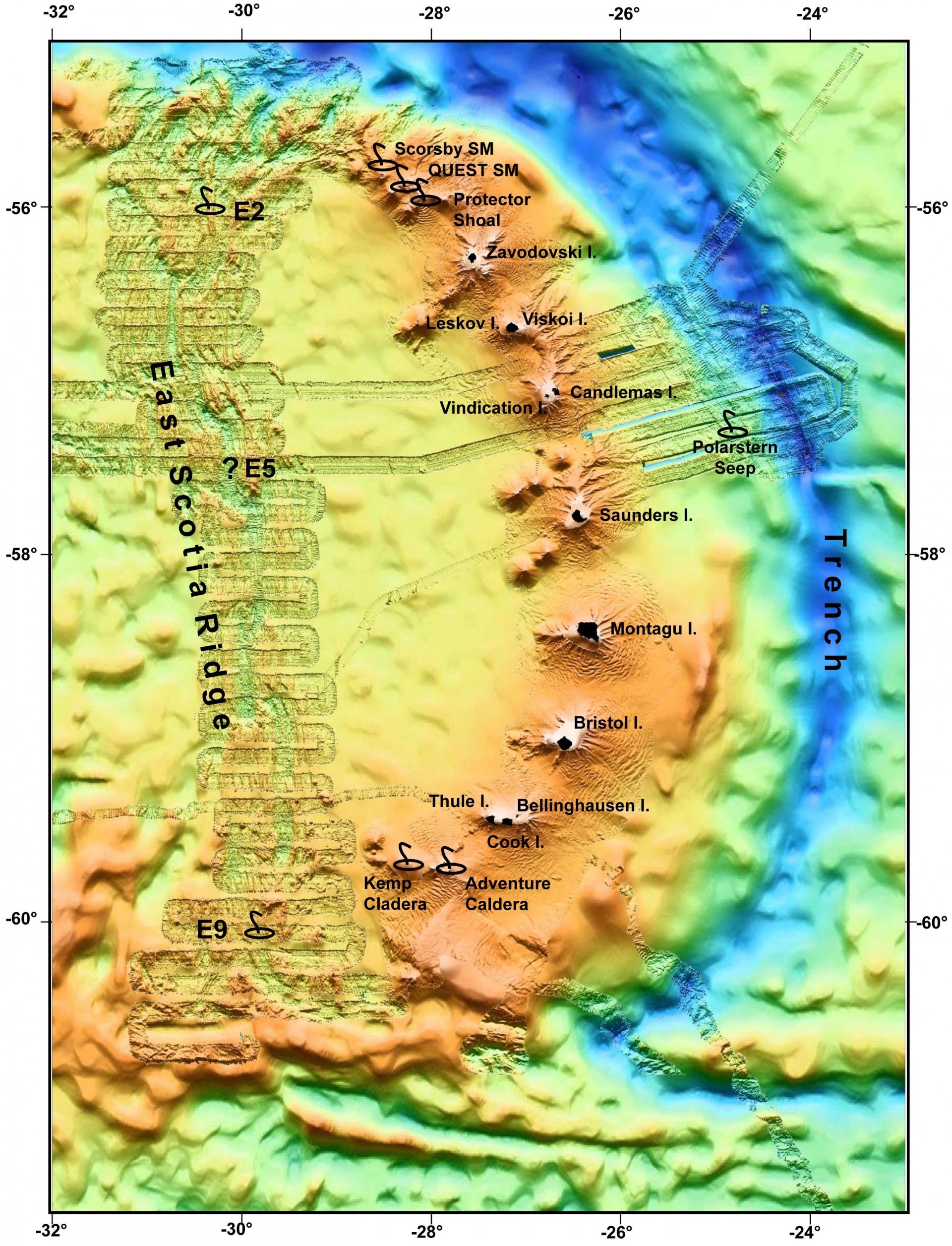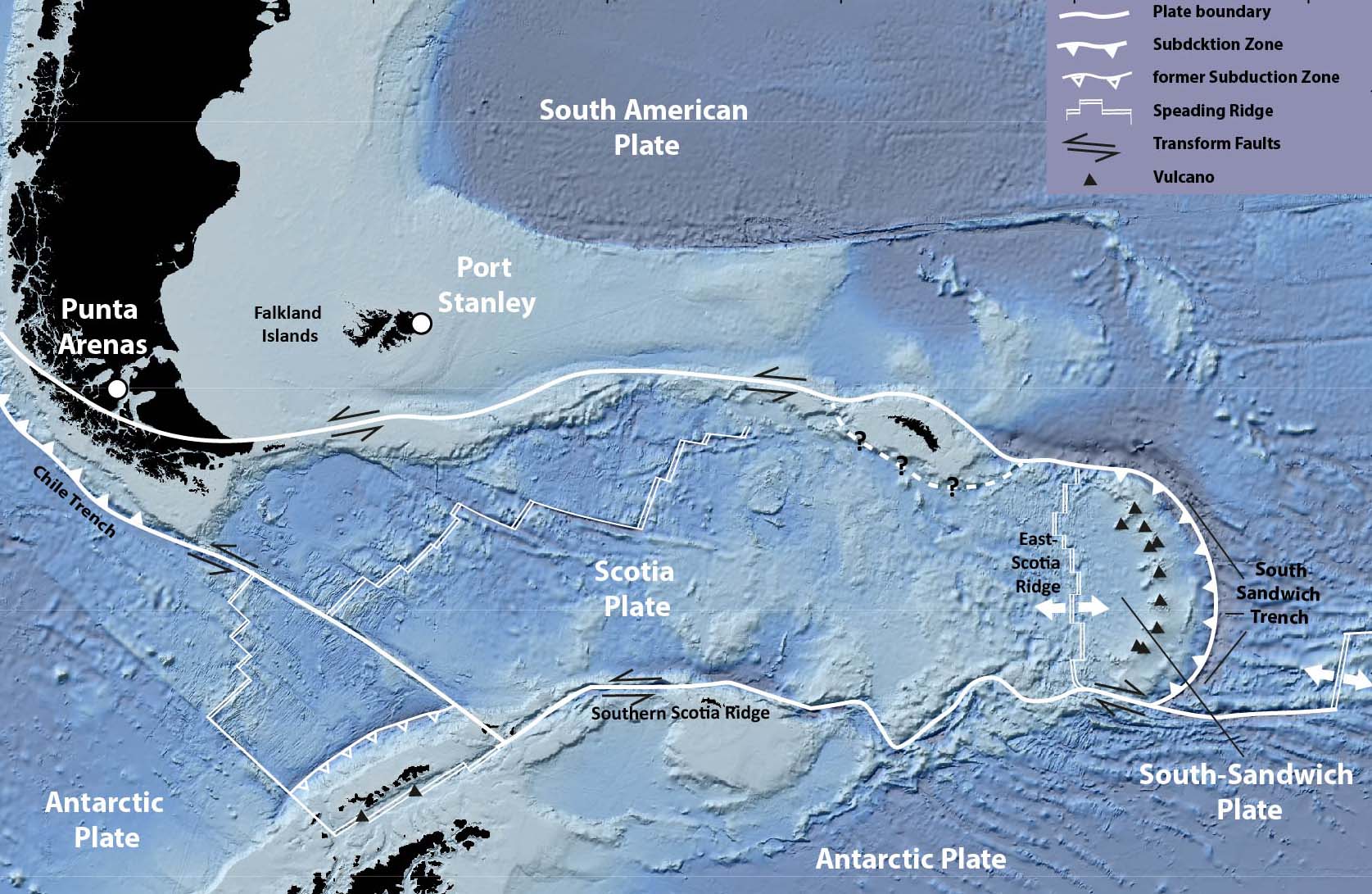- Press Office
- Press releases 2019
- MARUM scientists explore hot vents and cold seeps in the Southern Ocean
MARUM scientists explore hot vents and cold seeps in the Southern Ocean
For chief scientist Gerhard Bohrmann and his team it is not the first expedition to the Southern Ocean. The researchers have been studying questions relating to the circulation of fluids and gases at hot vents and cold seeps along the Sandwich Plate since 2012. With an east-west width of 350 kilometers and a north-south length of around 550 kilometers, the Sandwich Plate is a relatively small plate, but it represents the most active crustal area between the large South American and Antarctic Plates. The Sandwich Plate is formed by spreading and volcanism at the East Scotia Ridge. It is drifting toward the east, where it collides with the South American Plate. The result is a deep-sea trench extending to eight kilometers below the sea surface, and a chain of active volcanoes the South Sandwich Island Arc.
At the hot vents in this area, unique chemosynthetic-based ecosystems occur both on the ridge itself and on the underwater volcanoes of the South Sandwich volcanic arc. It is presumed that cold seeps will also be found here. Fluids and gases are released from both hot vents and cold seeps. The objective of the cruise is to examine these two systems in greater detail and to compare them. To help achieve this goal the remotely operated vehicle MARUM-Quest will make its first dive in the southern polar region.
Organisms living at the vents and seeps obtain energy from chemical compounds in the fluids released at these sites. In particular, the geographic proximity of a spreading ridge to a subduction zone in the target area raises additional interest for the expedition team. A multidisciplinary approach is being applied, involving experts from geology, geochemistry, biology, microbiology and marine biogeography. Furthermore, for the first time, scientists onshore at MARUM – the Center for Marine Environmental Sciences of the University of Bremen will be able to follow the dives during the cruise and thus be able to contribute their expertise in real time.
In the upcoming years, Expedition PS119 will also be included as a theme for a number of public exhibitions. Collaborative projects are already underway with the International Maritime Museum in Hamburg, the Humboldt Laboratory of the Humboldt Forum and the Lokschuppen Exhibition Center in Rosenheim.
Participating Institutes:
Alfred Wegener Institute, Helmholtz Centre for Polar and Marine Research
British Antarctic Survey (GB)
Boone Pickens School of Geology, Oklahoma State University (USA)
Centrum für Naturkunde (CeNak), Universität Hamburg
College of Earth, Ocean, and Atmospheric Sciences, Oregon State University (USA)
Institute for Geography and Geology of the University of Greifswald
Institut de Physique du Globe Paris, Sorbonne (F)
MARUM – Center for Marine Environmental Sciences, University of Bremen
Max Planck Institute for Marine Microbiology
National Oceanography Centre (GB)
School of Biological Sciences, Queens University Belfast (GB)
School of Earth and Environment, University of Leeds (GB)
MARUM produces fundamental scientific knowledge about the role of the ocean and the ocean floor in the total Earth system. The dynamics of the ocean and the ocean floor significantly impact the entire Earth system through the interaction of geological, physical, biological and chemical processes. These influence both the climate and the global carbon cycle, and create unique biological systems. MARUM is committed to fundamental and unbiased research in the interests of society and the marine environment, and in accordance with the Sustainable Development Goals of the United Nations. It publishes its quality-assured scientific data and makes it publicly available. MARUM informs the public about new discoveries in the marine environment and provides practical knowledge through its dialogue with society. MARUM cooperates with commercial and industrial partners in accordance with its goal of protecting the marine environment.
Please direct your queries to:
Head of Press & Communications
MPI for Marine Microbiology
Celsiusstr. 1
D-28359 Bremen
Germany
|
Room: |
1345 |
|
Phone: |

